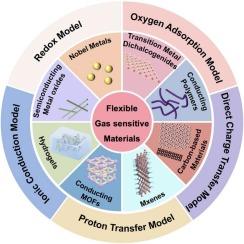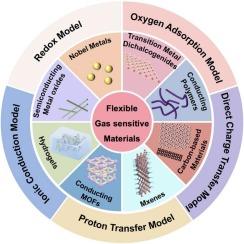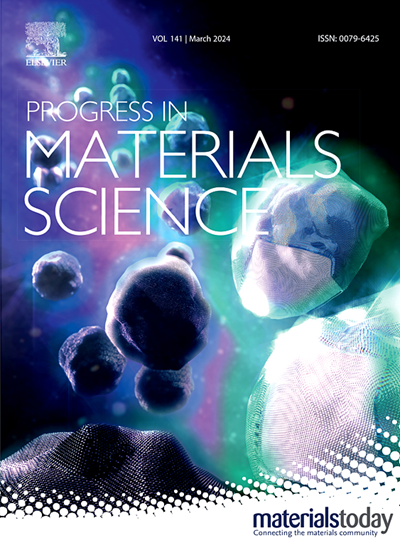Elaborately designed intelligent responsive sensing materials for development of flexible gas sensors
IF 40
1区 材料科学
Q1 MATERIALS SCIENCE, MULTIDISCIPLINARY
引用次数: 0
Abstract
With the development of artificial intelligence and Internet of Things, flexible gas sensors have emerged as vital functional devices by integrating with smart wearable electronics, which exhibit irreplaceable advantages in medical diagnosis, aerospace, environmental remediation, robotics, and electronic skin. The elaborately designed sensing materials are critical to developing high-performance gas sensors in terms of sensitivity, selectivity, stability, and response/recovery dynamics. In addition, to achieve the reliable and consistent operation of the flexible sensing devices, it is essential to ensure an effective and stable integration between sensing materials and device substrates. Consequently, it is distinctly meaningful to comprehensively summarize the design principles and surface properties of gas-sensitive materials in flexible gas sensors. This review originates from the precise synthesis, regulation and structure optimization of sensing materials for flexible gas sensors, and the new concept of “chemical microenvironment” is proposed to elucidate the sensing mechanism from molecular-atomic level. Specifically, various carrier migration models (e.g., electron, proton, ion) and surface/interfacial interaction are highlighted. Finally, the emerging opportunities and challenges in flexible gas sensors are proposed and predicted, aiming to provide insight about the development of flexible gas sensors into the next-generation sensing applications and further satisfy the growing requirements of smart sensors for long-life, biocompatibility, and real-time communication capabilities.


为开发柔性气体传感器精心设计了智能响应传感材料
随着人工智能和物联网的发展,柔性气体传感器与智能可穿戴电子产品融合,成为重要的功能器件,在医疗诊断、航空航天、环境修复、机器人、电子皮肤等领域展现出不可替代的优势。精心设计的传感材料对于开发高性能气体传感器在灵敏度、选择性、稳定性和响应/恢复动力学方面至关重要。此外,为了实现柔性传感器件的可靠和一致的运行,必须确保传感材料与器件基板之间有效和稳定的集成。因此,全面总结柔性气体传感器中气敏材料的设计原理和表面特性具有重要意义。本文从柔性气体传感器传感材料的精确合成、调控和结构优化等方面入手,提出了“化学微环境”的新概念,从分子-原子水平阐述传感机理。具体来说,各种载流子迁移模型(例如,电子,质子,离子)和表面/界面相互作用被强调。最后,提出并预测了柔性气体传感器的新机遇和挑战,旨在为柔性气体传感器在下一代传感应用中的发展提供见解,并进一步满足智能传感器对长寿命、生物相容性和实时通信能力日益增长的需求。
本文章由计算机程序翻译,如有差异,请以英文原文为准。
求助全文
约1分钟内获得全文
求助全文
来源期刊

Progress in Materials Science
工程技术-材料科学:综合
CiteScore
59.60
自引率
0.80%
发文量
101
审稿时长
11.4 months
期刊介绍:
Progress in Materials Science is a journal that publishes authoritative and critical reviews of recent advances in the science of materials. The focus of the journal is on the fundamental aspects of materials science, particularly those concerning microstructure and nanostructure and their relationship to properties. Emphasis is also placed on the thermodynamics, kinetics, mechanisms, and modeling of processes within materials, as well as the understanding of material properties in engineering and other applications.
The journal welcomes reviews from authors who are active leaders in the field of materials science and have a strong scientific track record. Materials of interest include metallic, ceramic, polymeric, biological, medical, and composite materials in all forms.
Manuscripts submitted to Progress in Materials Science are generally longer than those found in other research journals. While the focus is on invited reviews, interested authors may submit a proposal for consideration. Non-invited manuscripts are required to be preceded by the submission of a proposal. Authors publishing in Progress in Materials Science have the option to publish their research via subscription or open access. Open access publication requires the author or research funder to meet a publication fee (APC).
Abstracting and indexing services for Progress in Materials Science include Current Contents, Science Citation Index Expanded, Materials Science Citation Index, Chemical Abstracts, Engineering Index, INSPEC, and Scopus.
 求助内容:
求助内容: 应助结果提醒方式:
应助结果提醒方式:


